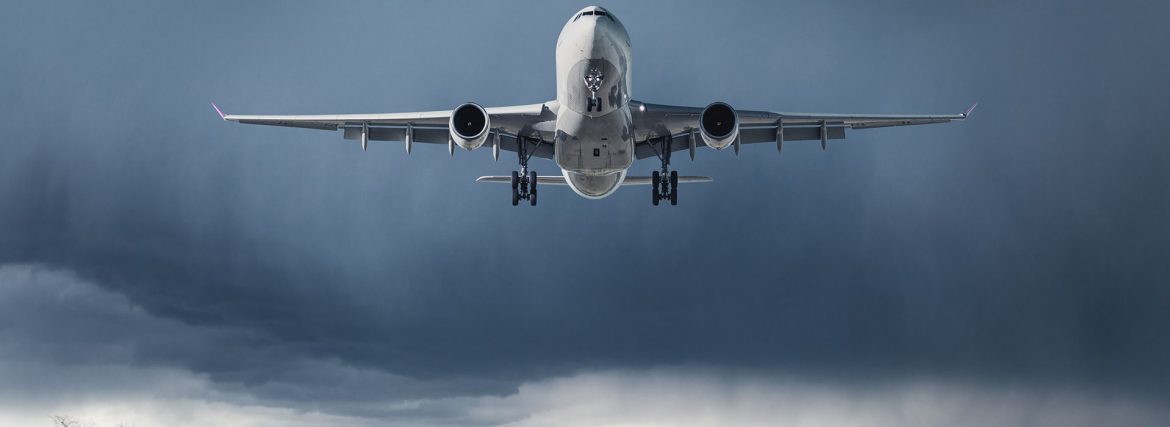Planning for the Unpredictable: Extreme Weather and Base Location
Source: https://nbaa.org/, News Editor, First Published June 13th, 2025
A growing trend of unpredictable and damaging weather is forcing some business aircraft operators to reconsider where they base their aircraft. Today’s regional weather patterns are a key consideration, experts say, impacting everything from insurance to infrastructure planning.
During the past decade, the frequency and severity of extreme weather events in the United States have surged. According to the National Centers for Environmental Information, the 1980s saw a total of 33 natural disaster events blamed for more than a billion dollars in damages, while in the 10 years leading up to 2023 that number rose to 173.
While the most prominent risks stem from thunderstorms, cyclones, hurricanes and tornadoes, flooding and wildfires are becoming increasingly disruptive, said Andy Eggert, a flight planner and meteorologist at International Trip Planning Services.
The National Weather Service (NWS) Aviation Weather Center (AWC) produces warnings and advisories for aviation hazards in the form of SIGMETs and graphical AIRMETs. SIGMETs are issued for severe risks such as widespread sandstorms, volcanic ash and tropical cyclones. AIRMETs depict areas of moderate turbulence, moderate icing, low ceilings/visibility, and strong surface winds.
Hazard threats can vary regionally and seasonally, said Jennifer Stroozas, warning coordination meteorologist, NWS AWC. “Needless to say, this means AWC is busy all year round in every season watching for aviation weather hazards,” she said.
Continuity Planning and Preparedness
Eggert recalled a “near worst-case scenario” ahead of Hurricane Milton’s landfall in October 2023. A South Florida-based operator debated whether to relocate their aircraft. Although South Florida was outside the hurricane’s forecast cone, the operator ultimately opted to move the aircraft as a precaution.
“It turned out to be a wise decision,” Eggert noted. “Milton produced an unusually high number of tornadoes across Florida, particularly along the Atlantic coast – directly affecting the area where the operator had been based – despite the eye making landfall more than 150 miles away, just south of Tampa Bay.”
The incident was discussed at the 2025 NBAA Schedulers & Dispatchers Conference in March, where Eggert presented alongside Richard Weiss, quality assurance manager at World Fuel Services.
“You need to make sure you have a continuity plan in place so that, after the storm, your business is ready to resume operations or effectively manage the aftermath,” Weiss said. “That includes being prepared for impacts not just to your facilities, but also to your workforce.”
World Fuel has dedicated teams positioned to work remotely or from unaffected locations to ensure operational continuity. Weiss recommends FBOs and aviation businesses – regardless of size – develop similar strategies.
Weather Intelligence and Infrastructure
One of the most effective tools in weather preparedness, Weiss noted, is a robust weather detection system.
Eggert agrees, he said even smaller airports should maintain stations that report key aviation weather metrics, such as wind, temperature, barometric pressure, cloud cover and precipitation. Larger airports often benefit from nearby NWS offices, which provide radar coverage and contribute to the Automated Surface Observing System (ASOS) network. Jointly operated by the NWS, FAA and Department of Defense, the ASOS network supports weather data collection and coordination efforts with airport authorities.
Real-time weather intelligence is becoming a standard component of safety management systems (SMS). Many companies now employ in-house or contracted meteorologists to support decision-making during dynamic weather situations.
Infrastructure also plays a role in mitigating risk. “The equipment available depends on the size and location of the airport,” Eggert said. “For example, northern airports may have snowplows, while some locations even use jet dryers to manage wet runways – similar to what you’d see at a NASCAR track.”
However, Eggert emphasized that beyond accurate forecasting, there is often little that can be done to keep operations running during the most severe weather events.
Mitigating Risk
To better understand the most prominent risks to aviation, AWC’s Stroozas said her office hosts a National Oceanic and Atmospheric Administration Corps officer, who can fly scientific missions like hurricane hunting to provide expertise and input from a pilot perspective.
AWC also has a research and development arm that’s laser-focused on advancing the science of aviation hazards. “This includes joint research projects with our FAA partners,” said Stroozas. “AWC also hosts testbed experiments to evaluate new models, research methods and techniques before they are incorporated into operations.”
Echoing AWC’s work, both Weiss and Eggert underscored the importance of integrating weather preparedness into a larger SMS framework – a system that includes planning, logistics, insurance, meteorological resources and employee safety.
“At the end of the day, whether you’re the aircraft owner, broker, trip support provider or handler, it’s about mitigating the risk to your part of the business,” Weiss said. “And working together to ensure that plan is executed effectively.”

